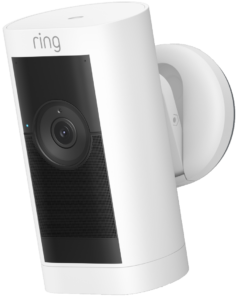 I started my switchover from Google Nest cameras to Ring back in May 2023, replacing my indoor Dropcams with battery-powered Ring Stick-Up Cams. At the time, I kept my Nest Outdoor cameras because Ring did not have a constant recording option, but fast forward to 2025 and Ring has finally added 24/7 recording to certain plugged-in and hardwired cameras as part of their new Ring Premium plan (for $200/year). I was losing my grandfathered $10/month Ring Protect plan in March and last year Google raised the annual price of Nest Aware Plus to $150, so it was time to upgrade some hardware and consolidate. I didn’t end up saving money (professional monitoring is now an additional $10/month on top of Premium), but I did gain some convenience of finally being able to ditch Nest and manage all of my cameras in a single place (plus additional automation capabilities, but more on that later).
I started my switchover from Google Nest cameras to Ring back in May 2023, replacing my indoor Dropcams with battery-powered Ring Stick-Up Cams. At the time, I kept my Nest Outdoor cameras because Ring did not have a constant recording option, but fast forward to 2025 and Ring has finally added 24/7 recording to certain plugged-in and hardwired cameras as part of their new Ring Premium plan (for $200/year). I was losing my grandfathered $10/month Ring Protect plan in March and last year Google raised the annual price of Nest Aware Plus to $150, so it was time to upgrade some hardware and consolidate. I didn’t end up saving money (professional monitoring is now an additional $10/month on top of Premium), but I did gain some convenience of finally being able to ditch Nest and manage all of my cameras in a single place (plus additional automation capabilities, but more on that later).
Stick-Up Cam Pro
Since I had already done the hard work during the initial Nest camera install (deciding on mounting locations, drilling holes in soffits, figuring out power connections, etc.), it made sense to do a 1:1 swap. I purchased six Ring Stick-Up Cam Pro (plug-in) devices (during a President’s Day sale) and then started my replacement project. Pulling the power cables through the attic was a lot easier since I just had to tape the Ring cable to the end of the Nest cable up in the attic and then slowly pull it out from the outside of the house. I did have a slight issue since the Ring camera total cord length is only 19.7 feet, compared to 25 feet for the Nest camera, but that wasn’t too difficult a problem to solve. Doing all the crawling around in the attic to replace the power cords took the majority of the installation time. After pulling the new USB-C cables through the outside, the actual process of removing the old Nest magnetic mounts, installing the new Ring mount, and actually installing the camera was quick and easy. One weird thing I noticed was the in-app installation walk-thru had the wrong instuctions for how to install the mount in a ceiling configuration. It incorrectly stated the “UP” arrow should face the direction the camera would be facing when in fact according to the paper instructions it needed to be facing away. I posted a question on the Ring Community letting them know about this.
Specs-wise, the Stick-Up Cam Pro is similar to the Nest Outdoor, with the added benefit of being newer hardware. The camera records 1080p HDR video with a 140° view, slightly wider than Nest’s 130°. There is, of course, a small blue LED on the front that turns on when the camera is recording (which means in 24/7 mode it’s on all the time) so I covered it with a blackout sticker. The night vision seems comparable, although I didn’t find much benefit in the color night vision feature so turned that off. In the comparison photos below, the old Nest cameras are on the left and the new Ring cameras are on the right. Notice how HDR really makes the images clearer when there overly bright and dark areas, very nice!
- mount instructions discrepancy
- Nest vs. Ring installation
- side yard (left)
- side yard (left) – night
- side yard (right)
- back yard
- driveway
- front door
Floodlight Cam Pro
I had one mid-project change: I realized when pulling out the Nest cameras that I had an electrical box in the soffit out on the lanai that used to house an old floodlight that I had removed and covered many years ago. Rather than just put another plug-in camera there, I returned one of the Stick-Up Cams and got a hardwired Ring Floodlight Cam Pro for that location instead (one less cord running through the attic!). The hardest part of that swap was trying to figure out which breaker controlled the wires in the box since it had been unused for so long. But I managed to get the camera wired in and mounted without hurting myself or causing any electrical problems. Like the Stick-Up Cam tutorial issue I mentioned above, the in-app tutorial for the floodlight cam seemed to indicate an under-eaves installation was not supported, despite the product page, specs, and FAQ indicating the contrary (so I posted another question in the Ring Community).
The floodlight camera records 2K (2560 x 1440) HDR video and has the same 140° view as the Stick-Up Cam Pro. The motion sensor is built into the bottom portion of the camera housing and covers a 270° area (unlike the Stick-Up cams which can only detect motion in what the camera can see). Or course it has the two 2000 lumen (dimmable) LED floodlights but interestingly no blue recording light to cover up.
- floodlight cam installed
- floodlight cam (rear)
- lanai
- night vision vs. floodlights
Ring App and Web Site
With the cameras installed and connected, it was time to tweak their configurations but I haven’t had a lot of time quite yet to play around with some of the more advanced features like Smart Alerts, Bird’s Eye Zones (and View). I did some basic setup (enabling constant recording, changing notification settings and alert tones, etc.) but still need to find time to do additional refinement. I also want to try and get some bandwidth statistics to compare the Nests to the Rings (including the additional of a 2K camera), so look for a future update or comment on that.
Using the app on my phone to scroll through recorded video or jump to motion events is pretty easy. The “smart video search” is actually kinda cool: I can search the driveway camera for “blue car” or “red car” to only find events related to my car or my wife’s, or “package” in the front door camera will return events with a package visible. I’ve even done “squirrel” searches in the back yard camera to find that pesky rodent that has been chewing on my metal fence! Creating clips to download or share is straightfoward, although the maximum clip length is 10 minutes.
As I mentioned at the beginning of this post I upgraded to the Ring Premium plan primarily to get 24/7 recording on the new outdoor cameras. I know Ring is new to continuous recording, but they still have some work to do in order to match my Nest experience. On the Ring web dashboard you can watch live feeds simulaneously from up to 4 cameras, which is nice if you want to configure some sort of home security dashboard on a tablet or something. Clicking on a camera shows you the live view, but you can’t get to the history from there (i.e., no scrubbing backwards). For that you have to exit live view, go to the History tab, select a camera (which shows you the list of events) and then click on the tiny “Explore 24/7 Recording” link to get to the camera’s timeline. The UI here is a little confusing because the timeline is a vertical scroll (instead of horizontal). Trying to define a clip to share or download is maddening: you can drag to the start time (or type it in), but then your only length options are 1 minute, 10 minutes, 1 hour, or entire day. What? And of those, only 1 and 10 minute clips are actually available to download. There’s also no timelapse option like Nest had and I can’t really make my own timelapse since the longest clip I can download is only 10 minutes. I need to post some feature suggestions on the community site and then just hope they continue to refine this feature because right now it’s not all that great compared to Nest’s offerings.
- multi-live view
- recording timeline
- clip controls
Integration and Automation
Amazon owns Ring so as soon as I added the new cameras to my Ring account it was no surprise that they were also detected by Alexa. On my Echo Show devices I can ask Alexa to “show me the [camera]” to get the live video feed.
But my primary home automation system is built on HomeSeer and the Ring Plug-In also automatically pulled in my new camera and created the appropriate devices in HS4. From there it was easy to include the cameras in automation events, something I could not do with the Nest cameras. For example, Ring has “modes” for the alarm system (like Home, Armed Away, and Armed Stay) and you can link the cameras to those modes (ex. enabling motion alerts when the alarm system is armed). My problem with Ring’s implementation is that as soon as the alarm is armed, the motion alerts are enabled so I get a bunch of alerts from the indoor cameras as I’m leaving the house. Instead of using Ring modes to control this, I’m using a HomeSeer event: when the alarm is armed, the system waits five minutes and then turns on the motion alerts for the cameras, giving me time to get out of the house without triggering a bunch of motion events I don’t care about. I also have an event that turns on the new floodlight when someone opens the back door into the lanai after dark. This allows for a lot more flexibility than what Ring provides.
I’m also running Homebridge, which lets me view and control all of my HomeSeer devices in the Apple Home app on my phone. All of my Ring cameras are now available to view in the Home app (and even on my Apple TV!) which makes for a better experience for my wife (no need to use multiple apps).
- Ring camera device in HomeSeer
- HomeSeer event to enable motion alerts
- cameras on Apple TV through Homebridge
That completes my camera conversion and my departure from Google/Nest!
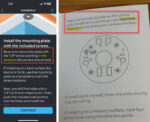

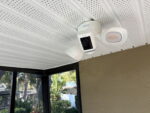
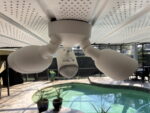


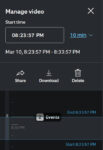
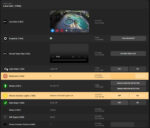

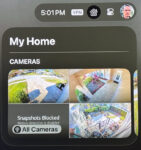
Ok, wow. Apparently I didn’t do my research. Today I noticed that there is no mention of the Ring Stick-Up Cam Pro available for purchase from Ring.com or Amazon! Clicking on the item from my purchase history on Amazon gives me a 404 … it’s been completely wiped from the site. On Ring.com, doing a search for “pro” will show the Stick-Up Cam Pro in the results, but clicking on it takes you to the Stick-Up Cam Plus.
The Pro was originally $180 but I bought mine “on sale” for $90 (the Plus lists for $99). It looks like this new camera was announced back in February and started shipping on March 26. So apparently I fell into the gap and ended up buying a product that Ring was discounting to dump inventory before releasing the new model (I made my initial purchase in early February, before the Plus announcement).
That’s on me I guess … doh!
(Oh, and I did check to make sure this wasn’t some sort of April Fool’s joke 😉 )